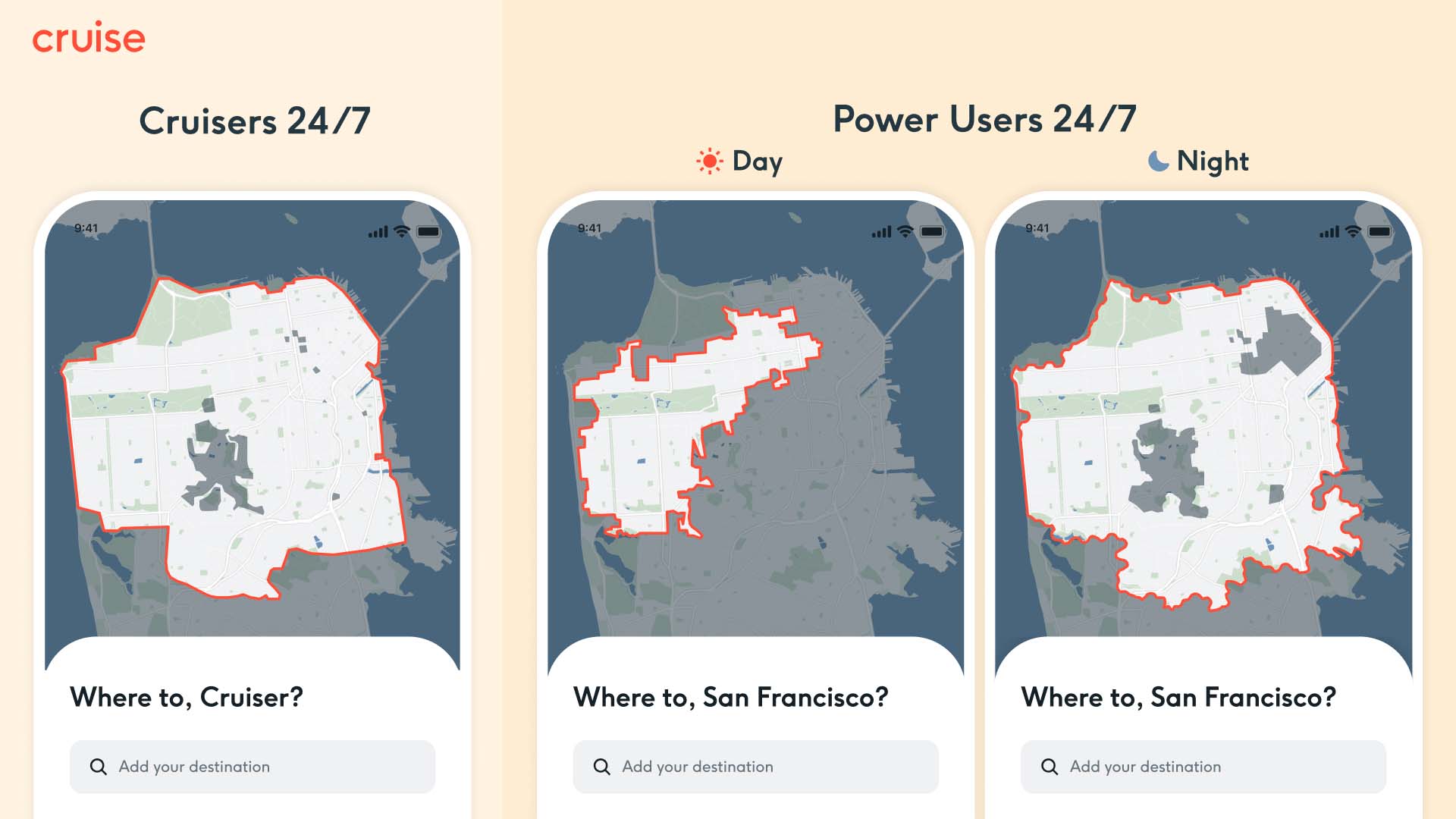|
Listen to this article  |

Cruise’s expanded service areas in San Francisco. “Cruisers”, or Cruise employees, have access to the full map, while “Power Users”, members of Cruise’s rider community still have a limited map. | Source: Cruise
Cruise is expanding its robotaxis to operate 24/7 in most of San Francisco. According to Kyle Vogt, the company’s co-founder and CEO, the expanded service area will be rolled out in stages, with Cruise employees having access first, then members of the public.
“Operating robotaxis in SF has become a litmus test for business viability. If it can work here, there’s little doubt it can work just about everywhere,” Vogt said on social media. “You’ll soon see us open up full operations in other cities. The capabilities and machine learning systems we’ve built to handle things in SF have proven themselves in many other cities around the world.”
The service area for Cruise employees, known as “Cruisers,” covers all of San Francisco except for a few select residential roads and high-speed streets that the company doesn’t drive on. “Power Users,” or members of Cruise’s rider community, will still only have access to a limited service area while the company ensures its service is ready for them and then the general public.
Cruise operates its robotaxi service in San Francisco, Austin and Chandler, Arizona, a suburb of Phoenix. Rides in Austin and Chandler began in December 2022. A few months later, in February 2022, the company announced that it reached one million driverless miles just 15 months after the company gave its first fully driverless ride.
Well folks, we did it. I have been waiting for this day for almost 10 years.
I am proud to announce @Cruise is now running 24/7 across all of San Francisco!
This is a pivotal moment for our business.
Let me tell you why 👇(1/6) pic.twitter.com/UqCMgozrWX
— Kyle Vogt (@kvogt) April 25, 2023
The company has recently started testing its purpose-built Origin vehicle on public roads in San Francisco. Origin is a fully autonomous vehicle with no front seat or steering wheel, designed specifically for giving autonomous taxi rides.
While Cruise has had much success in rolling out its robotaxi services, it hasn’t been without challenges. Earlier this month, the company issued a voluntary recall of 300 Cruise vehicles with the National Highway Transportation Safety Administration (NHTSA). The recall was in response to a minor collision where a Cruise robotaxi hit the back of a San Francisco bus.
Cruise’s autonomous driving system is also currently being investigated by NHTSA. In a filing, NHSTA said it was interested in two different issues that had been reported to the administration that both result in the robotaxis becoming hazards for others on the road. The first is an issue with the robotaxis breaking too hard when approached from behind. The second issue, unrelated to the first one, involves Cruise’s vehicles becoming immobilized on the road.
Finances remain another potential issue. Cruise, the autonomous vehicle division of General Motors, lost $561 million in the first quarter of 2023. It earned $30 million in revenue for GM, though most of that money comes from interest and other non-operating sources.
Credit: Source link


Comments are closed.